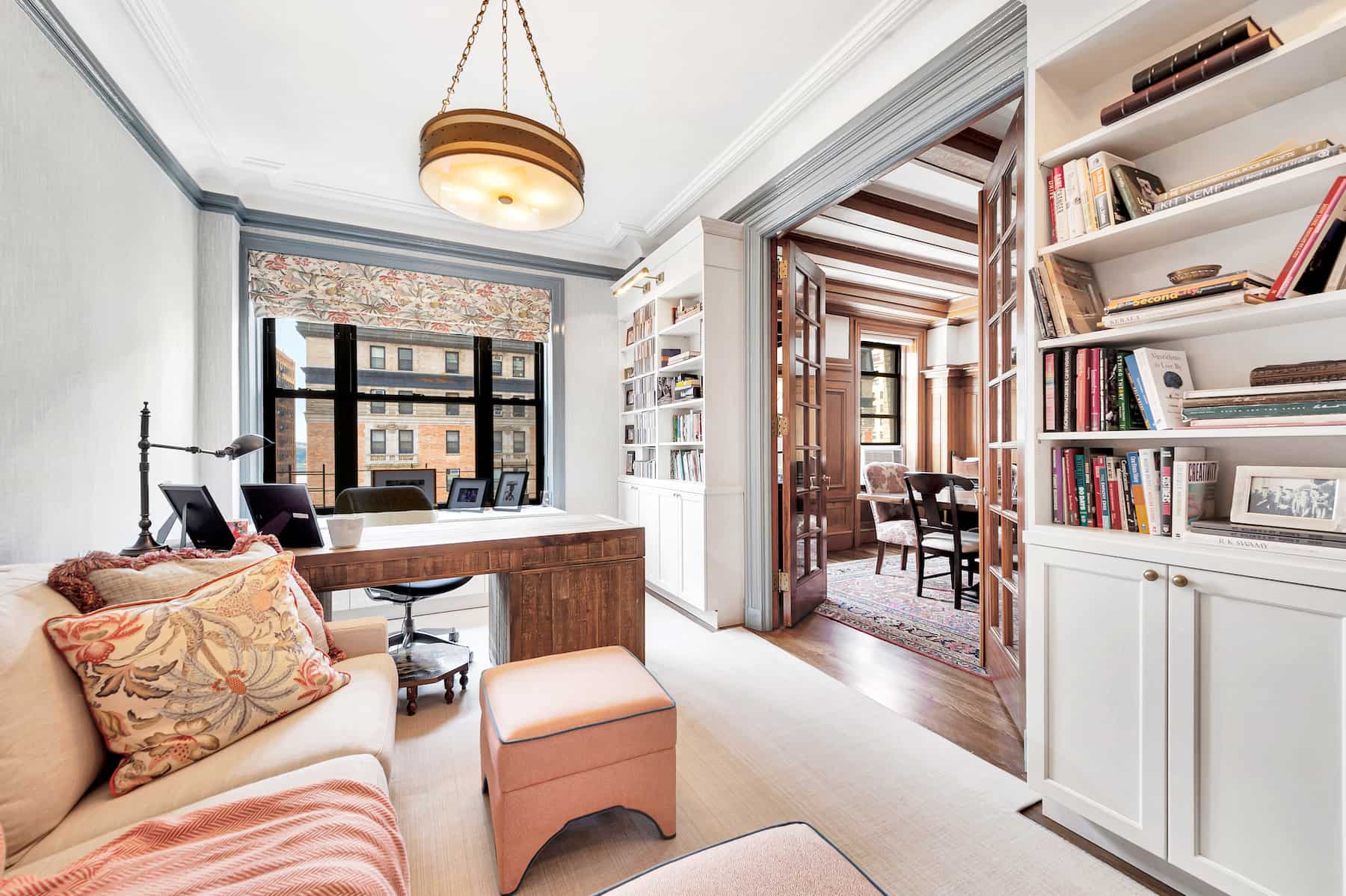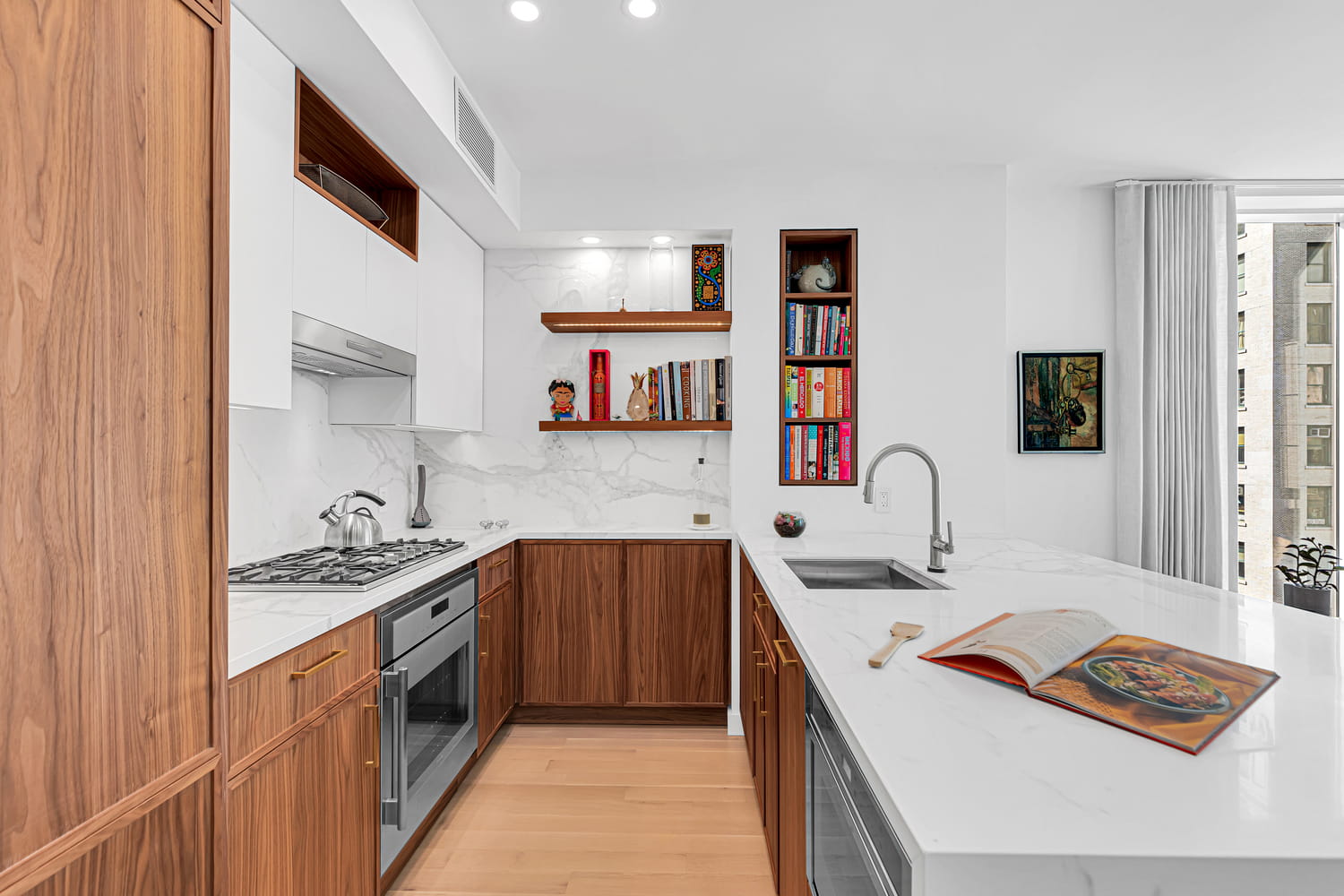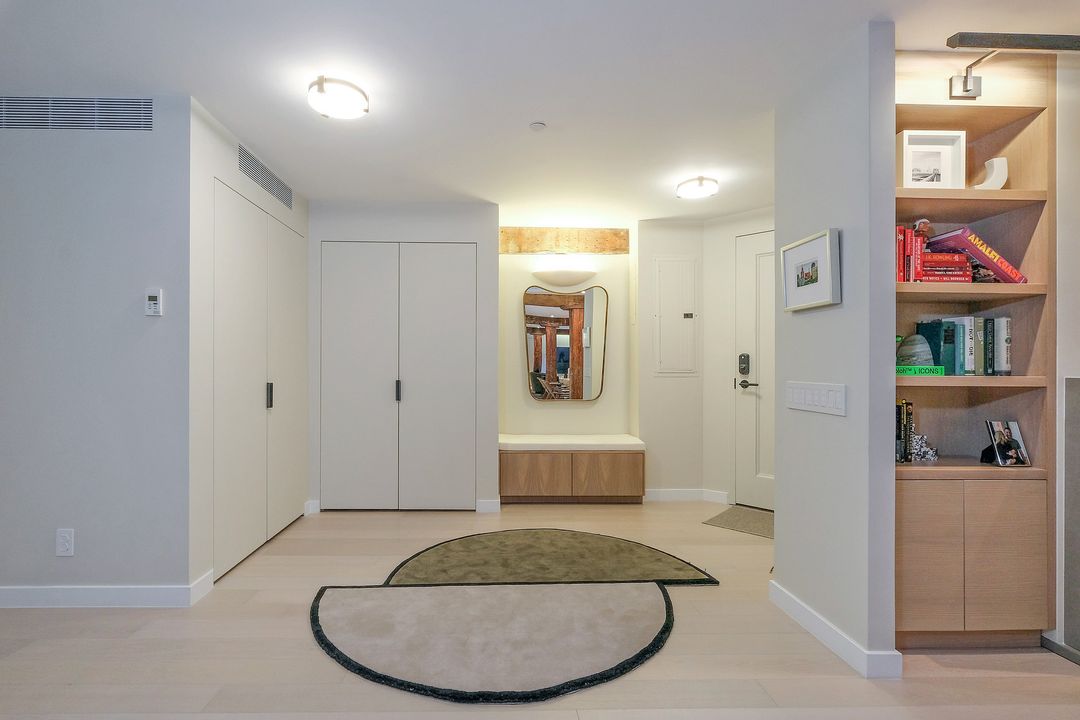NYC Apartment Renovation Costs In 2026: Costs Per Square Foot
NYC apartment renovation costs can vary based on property type, site conditions, level of finishes, and ultimately the scope of the project. Accurately managing our customers expectations is at the core of what we do. Get prepared with our guide to general per-square foot prices.
December 22, 2025
|

NYC Apartment Renovation Costs In 2026: Costs Per Square Foot
Setting expectations about the cost of your NYC apartment renovation is essential to an ideal final result. Here are some general per-square-foot prices to help prepare your budget.
TABLE OF CONTENTS
- Costs Of Typical NYC Renovation At A Glance
- 2026 Market Trends Affecting NYC Renovation Costs
- Hidden Costs In NYC Apartment Renovations: What To Budget For
- Four Tips to Maximize Apartment Renovation Costs Per Square Foot
- Adding Value With a Design-Build Firm
Renovating your New York City apartment provides value well beyond a dollar amount. It can mean adding more space for a growing family, living in your ideal location, or achieving the luxury aesthetic you’ve always wanted.
Of course, the money does matter. If you’re looking to sell, a renovation can net you a higher price. If you’re in the market to buy, choosing to renovate a fixer-upper can be more cost-effective than purchasing a move-in-ready home. Either way, knowing what to expect when considering the cost of your NYC apartment remodel is vital to a streamlined renovation.
Ultimately, the price tag depends on the scope of your project and how you plan and execute, but there are some general per-square-foot prices we can provide as a guideline to help prepare for your project. And with the help of an experienced, all-inclusive design-build firm, you can maximize every dollar spent on your renovation.
MIN.jpg)
[#Costs]Costs Of Typical NYC Renovation At A Glance[#Costs]
Typically, a full upper mid-tier renovation can range in cost from $425 to $550 per square foot (inclusive of all labor and materials), though price can vary due to various factors. Luxury renovations will typically start at $550 per square foot and can fetch as high as $850 per square foot depending on level of finishes and site conditions. Keep in mind, these ranges apply to full apartment renovations only, as individual room renovations cost more per square foot due to fixed costs and trade minimums.
Material Selection
One factor in the cost of a NYC renovation is the quality of materials desired. To help gauge the cost per square foot and how materials factor into the bottom line, we’ve broken down a standard apartment renovation in comparison to a high-end apartment renovation:
What’s Included In An Apartment Renovation (Upper Mid-Tier Finishes) Priced $550 to $650 Per Square?
At $550–$650 per square foot, the scope is usually focused on renovating the entire apartment with a focus on finish upgrades and targeted improvements, without structural reconfigurations or major layout changes. More structural adjustments tend to depend on the existing conditions, the goals for the space, and what’s feasible within the budget.
What’s Included In An Apartment Renovation (Luxury Finishes) Priced $700+ Per Square Foot?
Paying around $700+ per square foot, expect your NYC apartment renovation to include luxury finishes and extensive customization—often including significant layout reconfigurations, HVAC, Windows, personalized detailing, and custom millwork throughout. A full kitchen overhaul is common (high-end fixtures and appliances, premium stone options, oversized island), along with multiple fully-renovated bathrooms with elevated fixtures, custom vanities, and upgraded shower/bath builds with curated tile and stones.
Beyond kitchens and baths, living and bedroom spaces are often reworked with built-ins and tailored storage, while pre-war apartments may include restoration work.

Layout Adjustments
Changing the layout will add to the cost and likely start your renovation in the $400s per sq foot.
NYC Permits & Formalities
Architectural plans, permits, and other paperwork needed to apply for a NYC apartment remodel can cost upwards of $30,000. For example, if your project includes plumbing work, the permits for that alone can cost as much as $5,000. Electrical permits cost about $900 on average, while an asbestos inspection, if necessary, would run you an additional $500 to $1,500.
Heating & Cooling
Adding central air to your scope can easily add $50,000 or more to your project, but it is not unheard of to reach closer to $100,000 depending on the size, scope, and ancillary work involved.
Pre-War Vs Post-War Spaces
A pre-war home with plaster walls will tend to increase costs, simply because plaster walls require more work in order to modernize, whether necessitating multiple skim coats or demolishing old ones to be replaced with new materials. Learn more about pre-war renovations in New York City.
Elevator Vs. Walk-Up
Never take heights for granted when considering cost. Naturally, renovations that require walking up stairs take longer and thus cost more because all the materials have to be manually transported. The higher the floor, the costlier the renovation.
Existing Condition
An estate-condition space is likely to run north of $500 per sq foot if the project is a full gut renovation. For more on such extensive renovations, read Gut Renovations 101. Other factors that tend to increase the renovation costs of pre-war spaces in estate-condition include asbestos and lead abatement and the desired level of period specificity.

[#2]2026 Market Trends Affecting NYC Renovation Costs[#2]
While renovation costs continue to rise thanks to external factors, specific trends are having an especially noticeable impact on spend in 2026. From labor rates and material sourcing to tariff and interest rate pressure, here is a look at what homeowners can expect to navigate:
Tariffs and Material Price Increases
In 2026, tariffs on steel, aluminum, and lumber continue to influence material pricing across NYC renovations. These increases are particularly noticeable in projects involving substantial electrical, framing, or HVAC upgrades. For example, NYC electrical code requires BX cable encased in steel or aluminum, making electrical work more vulnerable to cost hikes. Similarly, lightweight aluminum framing—often necessary for high-rise work and service elevator logistics—has become more expensive. Lumber prices, while less consistent, remain high due to ongoing uncertainty around Canadian imports.
Because we operate independently of specific vendors, our brand-agnostic model gives us the flexibility to source from a wide range of suppliers—including domestic and international brands—so we can pivot if material costs change. This flexibility allows us to balance quality and cost, whether that means evaluating cabinetry alternatives or sourcing millwork that fits the design without compromising budget.
Labor Market Trends
Skilled labor remains in high demand across New York City. With extreme demand and minimal scalability in availability, wages for licensed trades—especially electricians, plumbers, and millworkers—have increased by 5–8% over the past year. This trend directly impacts renovation pricing, particularly in projects with extensive structural or mechanical, electrical, and plumbing upgrades. At Gallery, our long-standing relationships with reliable subcontractors help us ensure consistent staffing and competitive labor pricing throughout each project.
Regulatory Changes and Code Updates
New DOB code updates that took full effect in late 2024 are still influencing everything from energy efficiency and lighting to ventilation and accessibility - especially in kitchens and bathroom renovations. While these changes can increase upfront renovation costs, they often help streamline approvals and reduce long-term maintenance issues. At Gallery, we account for these requirements early in the design process so there are no surprises in crunch time.
Year-Over-Year Pricing Shifts
Like most things in America, renovation costs in 2026 are up about 6–9% compared to 2024 and 2025, driven by labor, code changes, and tariffs. At Gallery, we monitor these shifts and always guide clients toward smart, budget-conscious choices whenever possible - without sacrificing quality. Another way we help counter rising costs is by passing along our trade discounts to clients—no markups, no middleman, just a partner you can trust.
.jpg)
[#3]Hidden Costs In NYC Apartment Renovations: What To Budget For[#3]
Renovation budgets are never an exact science—but that doesn’t mean they should be a moving target. Hidden costs are common in NYC renovations, which is why we flag them early and build in buffers wherever possible. Below are the most common—and avoidable—hidden costs we help clients plan for:
Temporary Housing
We often hear from clients who want to stay put during construction—until the walls come down and the plumbing shuts off. If your renovation includes full demolition or kitchen and bathroom upgrades, remaining in the apartment isn’t realistic. Most Gallery clients secure temporary housing for 3 to 6 months, depending on project complexity and building work-hour restrictions. In order to help provide as much leeway as possible, we provide a detailed construction schedule early in the planning process so you can line up accommodations as needed.
Building Fees
For most NYC renovations, co-ops and condos often charge fees that add up quickly. These may include:
- Common Area Protection Fees
- Elevator Reservation or Operator Fees
- After-Hours or Weekend Work Charges
In many pre-war buildings, there’s also a hard deadline for how long renovations can take—typically ranging from 60 to 120 days. Miss that mark, and daily penalties may kick in. We see this all the time, which is why we coordinate with building management to understand respective rules up front and build a realistic schedule that avoids unnecessary overages.
- Further Reading: Renovating Pre-War And Post-War NYC Apartments: A Comparison
Insurance Requirements
NYC buildings often require contractors to carry specific insurance policies with high liability limits—and sometimes ask homeowners to carry additional coverage, too. At Gallery, we handle all insurance coordination from the start, ensuring full compliance with building requirements so our clients do not have to worry. We are fully licensed by both the NYC Department of Consumer Affairs and the Department of Buildings, and we carry all necessary OSHA and lead-safe certifications. For added peace of mind, our insurance coverage far exceeds standard requirements, including $5 million in general liability, $1 million in workers’ comp, and $3 million in auto coverage.
Infrastructure Surprises
Older pre-war buildings frequently reveal issues such as outdated or insufficient electrical systems, low plumbing capacity, or inadequate venting. To avoid surprises with key points of infrastructure, we conduct early inspections and testing—including for asbestos and lead—to identify and price out these risks before demolition begins. If remediation is needed, we manage the process through licensed specialists and build extensions into your project timeline.

[#Four]Four Tips to Maximize Apartment Renovation Costs Per Square Foot[#Four]
That’s a lot to consider, right? Before you get overwhelmed, the following four strategies can help maximize the value of your NYC renovation costs per square foot:
1. Shop For Quality, Not Name Brands
The specific fixtures and finishes you choose will be one of the biggest factors in your project’s price tag. The most important tip we offer is to focus on choosing high-quality options rather than defaulting to name brands. Some luxury brands such as Sub-Zero and Wolf can be justified because of the cost savings of keeping your food fresher for a longer period of time or because there is a certain level of expectation a future buyer may have of the appliance types they expect when purchasing an apartment. On the contrary, spending on known and overpriced brand name cabinetry or certain plumbing fixtures should be avoided as there are numerous better quality and lesser priced alternatives in the market.
2. Make Layout Changes A Last Resort
Sometimes, a layout change is necessary to include in an NYC home renovation. But, if you don’t need to add extra bedrooms or closets, you can expand your space, optimize natural light, or achieve other space-changing effects through strategic use of the right finishes and design elements. Your best bet is to work with an experienced contractor who understands how to use design to change your home’s aesthetic without changing its layout. They’ll help you understand all the options available before you decide to knock down any walls.
3. Work On A No-Change-Order Model
Another advantage of working with an experienced, trusted contractor is the assurance that you won’t have to deal with change orders halfway into your project, unless you request them yourself. No matter how much you strategize your renovation, you can still end up wasting time and money if your contractor tells you it’s possible to add light in your kitchen without a layout change, then goes back on that promise after demolition starts. Our strict no-change-order model includes every element of your renovation from step one, ensuring you don’t encounter unexpected charges like this at any phase of your project.
4. Hire Skilled Trades As Needed, Not Upfront
For large NYC apartment remodels, the traditional process includes hiring an architect as the first step. Though architects play an important role during certain phases of a project, not all architects are created equal. By waiting to hire one, you can take time to research the one that’s right for you. At Gallery KBNY, we work closely with architects and other skilled tradespeople based on the unique job requirements. We know the quality of their work and areas of expertise, and we know when that expertise is necessary for a given project.

[#Adding]Adding Value With a Design-Build Firm[#Adding]
At Gallery KBNY we partner with our clients to provide a seamless experience to the entire planning and renovation process. Our full-service design-build approach eliminates time and cost inefficiencies by having one professional team manage all aspects of the design, architectural planning, board approval, construction, and project management process.
Streamlined Communication
There are an excessive amount of moving parts in nearly any NYC renovation. That’s why effective communication is essential to a successful end result. Since design-build firms have all parties involved under one roof, communication between design and construction is seamless and leaves minimal project management for clients.
Extensive Planning To Avoid Unexpected Costs/Delays
With a full-service team of design and construction professionals experienced in the complexities of NYC renovations, design-build firms help prevent change orders and mid-project budget adjustments.
Board Approval And Permit Pros
We take on the responsibility of handling all red tape involved in a NYC renovation, at no additional cost. This includes reviewing and satisfying a condo board’s alteration agreement, filing all relevant architectural plans with the Department Of Buildings, and procurement of all necessary permits. Gallery also handles all LPC approvals and requirements.
All Costs Accounted For
Between labor from various trades, materials for multiple rooms, plus all the permits and testing, the amount of costs required for a full renovation in New York City can be extremely difficult to keep track of. By working with a full-service design-build firm, all expenses are tallied on one easy to digest bottom line.
Enhanced Material Access
Through our vendor relationships, we provide access to a wider variety of high-quality products, appliances, and finishes than you’ll find on any showroom floor. Also, because we quarterback the entire process and all the moving parts involved, we can help you cut out errors and overruns that impact your project’s timeline and costs per square foot.
[#Conclusion]Conclusion[#Conclusion]
With so many cost considerations when renovating in NYC, teaming up with a turnkey design-build firm is the most effective way to maximize your investment in your dream home.
Considering an apartment renovation in NYC? View our full portfolio of New York City renovation before and afters, learn more about Gallery KBNY, or simply contact us today.
We’re an award-winning design-build firm in New York City with a full-service approach to residential renovations in Manhattan and Brooklyn that includes everything from interior design and architecture services to filing permits and construction management. We’re experts in renovating pre-war homes, kitchens, bathrooms, flooring, sourcing custom pieces, building entirely new rooms (or even balconies), millwork, and all that falls in between.

.png)
.png)


-min.jpg)


.jpg)

%20(2).jpg)


.jpg)
%20Gallery%20KBNY.JPG)


